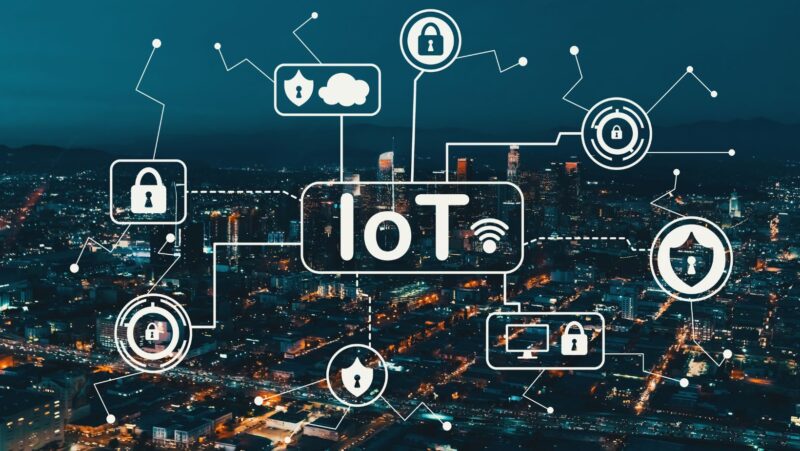The Internet of Things (IoT) has transformed the way we live, work, and interact with technology. In 2025, the number of connected devices is projected to exceed 25 billion worldwide, spanning everything from smart appliances and wearable health trackers to autonomous vehicles and industrial sensors.
This surge in connectivity brings convenience and innovation, but it also opens new doors for cybercriminals. Every connected device represents a potential entry point for hackers to steal data, disrupt services, or even cause physical harm. For businesses and individuals alike, IoT security has become a critical pillar of modern cybersecurity strategy.
Defining IoT Security
IoT security refers to the strategies, tools, and processes designed to protect connected devices, networks, and the data they transmit from cyber threats. Unlike traditional IT systems, IoT ecosystems often include devices with limited processing power, minimal built-in security, and diverse manufacturers-making them harder to protect.
At its core, IoT security ensures that only trusted devices can connect to networks, that data is encrypted and protected from interception, and that any suspicious activity is detected and addressed quickly.
While both IoT security and traditional cybersecurity share similar goals, the former deals with unique challenges, including scale, device diversity, and physical accessibility to devices. The complete guide to what is IoT security, you can explore resources that cover in-depth device-level, network-level, and application-level safeguards.
Why IoT Security Is More Complex Than Standard Cybersecurity
Protecting IoT systems is more challenging than securing traditional networks for several reasons:
Diversity of devices – IoT devices range from tiny sensors to complex machines, often lacking consistent security standards.
Limited built-in protection – Many devices ship with weak security features, default passwords, or outdated firmware.
Massive attack surface – With millions of devices connected globally, attackers have countless opportunities to find vulnerabilities.
One high-profile example is the Mirai botnet attack in 2016, where compromised IoT devices were used to launch massive distributed denial-of-service (DDoS) attacks, disrupting major websites and services. The incident highlighted just how dangerous insecure IoT networks can be.
Key Components of IoT Security
Device Authentication and Access Control
Only authorized devices should be allowed to connect to a network. This is achieved through secure credentials, multi-factor authentication, and digital certificates that verify device identity.
Data Encryption and Integrity
Encryption ensures that data remains unreadable to unauthorized parties during transmission and storage. Secure communication protocols like TLS and VPNs add extra protection.
Network Segmentation
By isolating IoT devices from critical infrastructure, businesses can limit the potential impact of a breach. Segmentation also helps contain malware if it infiltrates part of the network.
Continuous Monitoring and Threat Detection
IoT environments should be continuously monitored using anomaly detection tools and integrated with Security Information and Event Management (SIEM) systems for real-time alerts.
Benefits of Strong IoT Security
Protection of sensitive data – Safeguards personal and corporate information from theft.
Service reliability – Prevents disruptions to operations and customer services.
 Regulatory compliance – Helps meet requirements like GDPR, HIPAA, and NIST IoT standards.
Regulatory compliance – Helps meet requirements like GDPR, HIPAA, and NIST IoT standards.
Customer trust – Builds brand reputation through secure and reliable technology offerings.
Industry research from Gartner shows that organizations investing in robust IoT security see higher resilience against evolving cyber threats.
Risks of Poor IoT Security
Device hijacking – Hackers can take control of devices for malicious purposes.
Data theft – Unprotected devices can leak sensitive user or business data.
Botnets – Compromised devices can be used to launch large-scale attacks.
Safety hazards – In sectors like healthcare or manufacturing, a breach could endanger lives.
Best Practices for IoT Security
Keep device firmware updated to patch vulnerabilities.
Enforce unique, strong passwords for each device.
Remove or limit default administrative privileges.
Adopt Zero Trust security principles.
Perform regular audits and penetration tests.
According to the Cybersecurity & Infrastructure Security Agency (CISA), organizations that follow layered IoT security strategies significantly reduce the risk of breaches (source).
IoT Security in Different Sectors
Smart Homes
Securing personal devices, routers, and smart assistants with encryption and strong authentication.
Healthcare
Protecting connected medical devices, ensuring patient privacy, and meeting compliance requirements such as HIPAA.
Industrial IoT (IIoT)
Safeguarding manufacturing equipment, SCADA systems, and critical infrastructure from cyberattacks.
Smart Cities
Ensuring the resilience of traffic systems, public safety networks, and utility services. The World Economic Forum emphasizes that urban IoT projects must embed security from the start to avoid large-scale vulnerabilities (source).
Future Trends in IoT Security
AI-driven prediction – Using machine learning to forecast and block threats before they occur.
Blockchain security – Leveraging blockchain to provide tamper-proof device identities.
Regulatory expansion – Governments enforcing stricter IoT security standards.
Conclusion
IoT security is no longer optional-it’s a necessity in a world where connected devices control everything from home lighting to industrial machinery. By adopting strong authentication, encryption, segmentation, and continuous monitoring, both individuals and organizations can protect themselves from emerging threats.
As connectivity continues to expand, proactive IoT security strategies will be the key to safeguarding privacy, business continuity, and public safety.
FAQs
- What is the biggest challenge in IoT security?
The most significant challenge is the diversity and scale of IoT devices, making it difficult to apply uniform security policies and updates.
- Can regular antivirus software protect IoT devices?
Not effectively. IoT devices often lack the resources to run antivirus software, so security must focus on network protection, encryption, and device management tools.
- How often should IoT devices be updated for security?
Updates should be applied as soon as manufacturers release them. For critical systems, organizations should schedule periodic maintenance checks to ensure devices are running the latest firmware.